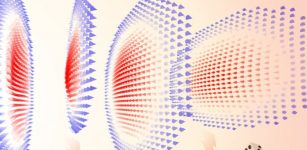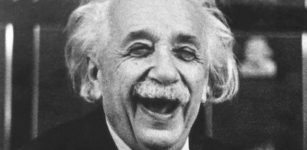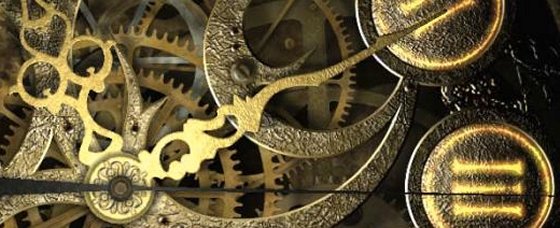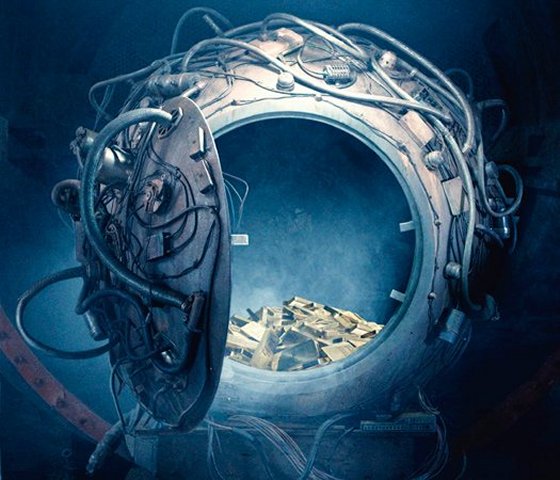Time Warp And Cloning Of Past Events – How Possible Is It?
MessageToEagle.com – There are many practical problems – the so-called ‘paradoxes’ – related to time travel, so… it most likely never going to happen, but the theoretical possibility of time travel is widely debated.
David Deutsch, a British physicist at the University of Oxford says that time travel may or may not be achieved one day, but we already have a reasonably good theoretical understanding of what it would be like if it were.
If one travels into the past one retains one’s normal freedom of action, but in general ends up in the past of a different universe, Deutsch says. For time travel to be physically possible it’s necessary to be a multiverse.
But how Deutsch did solve the so-called grandfather paradox? Would it be possible to travel back in time to kill one’s grandfather?
A time traveler faces the problem that if he kills his grandfather back in time, then he prevents his own existence – he’s simply never born and consequently is unable to travel back through time to kill his grandfather, and so on.
“The question is, how would you have existed in the first place to go back in time and kill your grandfather?” said Mark Wilde, an LSU assistant professor with a joint appointment in the Department of Physics and Astronomy and with the Center for Computation and Technology, or CCT.
Deutsch solved the Grandfather paradox originally using a slight change to quantum theory, proposing that you could change the past as long as you did so in a self-consistent manner.
“Meaning that, if you kill your grandfather, you do it with only probability one-half,” Wilde said. “Then, he’s dead with probability one-half, and you are not born with probability one-half, but the opposite is a fair chance. You could have existed with probability one-half to go back and kill your grandfather.”
There are scientists who say we can change the future with incredible time reversal technology, but what will happen with our past?
Is it possible to change the past?
Brian Cox, a Cern researcher at the University of Manchester, points out that even if the laws of physics do not prohibit time travel, that doesn’t mean to say it’s going to happen, certainly in terms of travelling back in time.
Dr. John Cramer, professor Emeritus of Physics at the University of Washington thinks we must think about time travel in baby steps. One possibility is to start with messages traveling through time. Dr. Cramer is currently working on the possibility receiving a message milliseconds before it’s sent.
LSU’s Mark Wilde says that time travel would theoretically be possible for time travelers to copy quantum data from the past.
Another problem is the no-cloning theorem, or the no “subatomic Xerox-machine” theorem, known since 1982. This theorem, which is related to the fact that one cannot copy quantum data at will, is a consequence of Heisenberg’s famous Uncertainty Principle, by which one can measure either the position of a particle or its momentum, but not both with unlimited accuracy.
According to the Uncertainty Principle, it is thus impossible to have a subatomic Xerox-machine that would take one particle and spit out two particles with the same position and momentum – because then you would know too much about both particles at once.
“We can always look at a paper, and then copy the words on it. That’s what we call copying classical data,” Wilde said. “But you can’t arbitrarily copy quantum data, unless it takes the special form of classical data. This no-cloning theorem is a fundamental part of quantum mechanics – it helps us reason how to process quantum data.
If you can’t copy data, then you have to think of everything in a very different way.”
But what if a Deutschian closed timelike curve did allow for copying of quantum data to many different points in space? According to Wilde, Deutsch suggested in his late 20th century paper that it should be possible to violate the fundamental no-cloning theorem of quantum mechanics.
Now, Wilde and collaborators at the University of Southern California and the Autonomous University of Barcelona have advanced Deutsch’s 1991 work.
The new approach allows for a particle, or a time traveler, to make multiple loops back in time – something like Bruce Willis’ travels in the Hollywood film “Looper.”
“That is, at certain locations in spacetime, there are wormholes such that, if you jump in, you’ll emerge at some point in the past,” Wilde said. “To the best of our knowledge, these time loops are not ruled out by the laws of physics. But there are strange consequences for quantum information processing if their behavior is dictated by Deutsch’s model.”
A single looping path back in time, a time spiral of sorts, behaving according to Deutsch’s model, for example, would have to allow for a particle entering the loop to remain the same each time it passed through a particular point in time. In other words, the particle would need to maintain self-consistency as it looped back in time.
“In some sense, this already allows for copying of the particle’s data at many different points in space,” Wilde said, “because you are sending the particle back many times. It’s like you have multiple versions of the particle available at the same time. You can then attempt to read out more copies of the particle, but the thing is, if you try to do so as the particle loops back in time, then you change the past.”
To be consistent with Deutsch’s model, which holds that you can only change the past as long as you can do it in a self-consistent manner, Wilde and colleagues had to come up with a solution that would allow for a looping curve back in time, and copying of quantum data based on a time traveling particle, without disturbing the past.
“That was the major breakthrough, to figure out what could happen at the beginning of this time loop to enable us to effectively read out many copies of the data without disturbing the past,” Wilde said. “It just worked.”
However, there is still some controversy over interpretations of the new approach, Wilde said. In one instance, the new approach may actually point to problems in Deutsch’s original closed timelike curve model.
See also:
Dr. Who And Time Travel – How Much Of It Is Possible?
Mystery Of Sid Hurwich And His Time-Altering Machine That Could “Freeze Time”
Time Travel Communication: Sending Messages Through Time Can Be Possible – Says Professor
“If quantum mechanics gets modified in such a way that we’ve never observed should happen, it may be evidence that we should question Deutsch’s model,” Wilde said.
“We really believe that quantum mechanics is true, at this point. And most people believe in a principle called Unitarity in quantum mechanics. But with our new model, we’ve shown that you can essentially violate something that is a direct consequence of Unitarity.
To me, this is an indication that something weird is going on with Deutsch’s model. However, there might be some way of modifying the model in such a way that we don’t violate the no-cloning theorem.”
Other researchers argue that Wilde’s approach wouldn’t actually allow for copying quantum data from an unknown particle state entering the time loop because nature would already “know” what the particle looked like, as it had traveled back in time many times before.
But whether or not the no-cloning theorem can truly be violated as Wilde’s new approach suggests, the consequences of being able to copy quantum data from the past are significant. Systems for secure Internet communications, for example, will likely soon rely on quantum security protocols that could be broken or “hacked” if Wilde’s looping time travel methods were correct.
“If an adversary, if a malicious person, were to have access to these time loops, then they could break the security of quantum key distribution,” Wilde said. “That’s one way of interpreting it. But it’s a very strong practical implication because the big push of quantum communication is this secure way of communicating.
We believe that this is the strongest form of encryption that is out there because it’s based on physical principles.”
Today, when you log into your Gmail or Facebook, your password and information encryption is not based on physical principles of quantum mechanical security, but rather on the computational assumption that it is very difficult for “hackers” to factor mathematical products of prime numbers, for example.
But physicists and computer scientists are working on securing critical and sensitive communications using the principles of quantum mechanics. Such encryption is believed to be unbreakable – that is, as long as hackers don’t have access to Wilde’s looping closed timelike curves.
“This ability to copy quantum information freely would turn quantum theory into an effectively classical theory in which, for example, classical data thought to be secured by quantum cryptography would no longer be safe,” Wilde said.
“It seems like there should be a revision to Deutsch’s model which would simultaneously resolve the various time travel paradoxes but not lead to such striking consequences for quantum information processing. However, no one yet has offered a model that meets these two requirements. This is the subject of open research.”
First version of this article was published on December 8, 2013
Copyright © MessageToEagle.com. All rights reserved. This material may not be published, broadcast, rewritten or redistributed in whole or part without the express written permission of MessageToEagle.com
References:
Todd A. Brun, Mark M. Wilde, and Andreas Winter – Quantum State Cloning Using Deutschian Closed Timelike Curves
Related Posts
-
 Gigantic Neolithic Newgrange Monument: A Temple, Astronomical Observatory Or Ancient Tomb?
No Comments | Aug 14, 2016
Gigantic Neolithic Newgrange Monument: A Temple, Astronomical Observatory Or Ancient Tomb?
No Comments | Aug 14, 2016 -
 Are The Dark Nazi Secrets Buried In Remote Argentinian Jungle?
No Comments | Mar 25, 2015
Are The Dark Nazi Secrets Buried In Remote Argentinian Jungle?
No Comments | Mar 25, 2015 -
 Dinosaurs Thrived After Ice, Not Fire – New Study
No Comments | Oct 30, 2024
Dinosaurs Thrived After Ice, Not Fire – New Study
No Comments | Oct 30, 2024 -
 Researchers Use Tiny Magnetic Swirls To Generate True Random Numbers
No Comments | Feb 8, 2022
Researchers Use Tiny Magnetic Swirls To Generate True Random Numbers
No Comments | Feb 8, 2022 -
 Never-Before-Seen Creature Discovered Below The Surface Of Antarctica
No Comments | Sep 23, 2019
Never-Before-Seen Creature Discovered Below The Surface Of Antarctica
No Comments | Sep 23, 2019 -
 New Exotic Matter Particle, A Tetraquark, Discovered By CERN!
No Comments | Jul 31, 2021
New Exotic Matter Particle, A Tetraquark, Discovered By CERN!
No Comments | Jul 31, 2021 -
 Did Ancient Aliens Leave A Hidden Message Containing The History Of Planet Earth In Our DNA?
No Comments | May 31, 2014
Did Ancient Aliens Leave A Hidden Message Containing The History Of Planet Earth In Our DNA?
No Comments | May 31, 2014 -
 Could A Huge Earthquake Sink A Whole Country?
No Comments | Jan 8, 2018
Could A Huge Earthquake Sink A Whole Country?
No Comments | Jan 8, 2018 -
 Funny People Have Higher IQ – Science Reveals
No Comments | Jun 24, 2017
Funny People Have Higher IQ – Science Reveals
No Comments | Jun 24, 2017 -
 Knots In The Resonator: Elegant Math In Humble Physics
No Comments | Jul 15, 2022
Knots In The Resonator: Elegant Math In Humble Physics
No Comments | Jul 15, 2022



